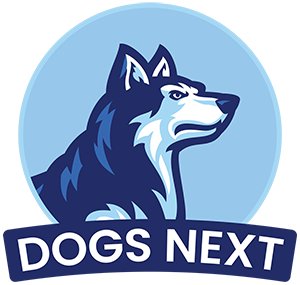To put a harness on a dog, place the harness over the dog’s head and secure the straps. Ensure it’s snug but not too tight.
Harnessing your dog ensures safety and control during walks. It’s vital to choose the right harness for your dog’s size and breed. A proper fit prevents discomfort and potential injuries. Start by introducing the harness slowly, letting your dog sniff and get used to it.
Place the harness over your dog’s head, then secure the chest and belly straps. Adjust the straps so the harness fits snugly but allows room for movement. Check for any signs of discomfort or chafing. A well-fitted harness can make walks more enjoyable for both you and your furry friend. Regularly inspect the harness for wear and tear to maintain safety.
Overview Of The Importance Of A Properly Fitted Harness
Putting a harness on a dog can be tricky. It’s essential to know the steps for a comfortable fit. A properly fitted harness ensures safety and comfort for your furry friend.
Ensuring Safety And Control
A well-fitted harness provides better control over your dog. It helps prevent escapes and accidents. Safety is the primary reason for ensuring a good fit. Dogs can slip out of loose harnesses. This can lead to dangerous situations.
Control is another key point. A harness distributes pressure evenly across the chest. This reduces strain on the neck. It is especially helpful for dogs who pull on the leash. A proper fit makes walking safer and more enjoyable.
Preventing Injuries
An ill-fitting harness can cause injuries. Chafing and skin irritations are common issues. These happen when the harness rubs against the skin. A snug fit reduces the risk of these problems.
Joint and muscle injuries can also occur. This happens if the harness puts pressure on the wrong areas. A properly fitted harness supports the dog’s body. This prevents strain on joints and muscles.
Enhancing Comfort
Comfort is crucial for your dog’s happiness. A good fit means the harness won’t dig into the skin. It allows for natural movement. Your dog will be more relaxed during walks.
Breathability is another factor. Some harnesses come with padded or breathable materials. These add to the comfort level. A proper fit ensures your dog stays cool and comfortable.
Improving Training
A well-fitted harness can aid in training. It gives you better control. This helps in teaching your dog to walk properly. Positive reinforcement works better with the right harness.
Behavior correction is easier too. A snug harness helps guide your dog. It makes training sessions more effective. Your dog will learn faster and better.
Types Of Dog Harnesses
Choosing the right harness for your dog is crucial. Different types of harnesses serve various purposes and ensure your dog’s comfort and safety. Let’s explore some common types of dog harnesses to help you make an informed choice.
1. Back-clip Harness
The back-clip harness has a D-ring on the dog’s back. This type is excellent for small dogs. It prevents the leash from getting tangled in the legs. The back-clip harness is easy to put on and provides a comfortable walking experience.
2. Front-clip Harness
The front-clip harness has a D-ring on the chest. This harness offers more control. It is ideal for dogs that pull on the leash. The front-clip design helps in steering the dog in the right direction.
3. Dual-clip Harness
The dual-clip harness features both front and back D-rings. This type provides versatility. You can switch between front and back clips as needed. It is perfect for training sessions and daily walks.
4. Step-in Harness
The step-in harness is simple and quick to put on. The dog steps into the harness, and you buckle it on the back. It is suitable for dogs that dislike having harnesses put over their heads.
5. Vest Harness
The vest harness covers more of the dog’s body. It offers extra comfort and security. This type is great for small and delicate dogs. The vest harness often comes with soft padding, making it gentle on the dog’s skin.
6. No-pull Harness
The no-pull harness is designed to discourage pulling. It distributes pressure evenly across the chest. This type is beneficial for training and controlling strong pullers. The no-pull harness helps make walks more enjoyable for both you and your dog.
| Type of Harness | Main Feature | Best For |
| Back-Clip Harness | D-ring on the back | Small dogs |
| Front-Clip Harness | D-ring on the chest | Dogs that pull |
| Dual-Clip Harness | Front and back D-rings | Training sessions |
| Step-In Harness | Easy to put on | Dogs that dislike overhead harnesses |
| Vest Harness | Extra comfort and security | Small and delicate dogs |
| No-Pull Harness | Discourages pulling | Strong pullers |
Step-by-step Guide
Putting a harness on your dog might seem tricky at first, but with a clear step-by-step guide, it becomes an easy task. This guide will walk you through the process, ensuring you and your dog have a smooth experience.
Preparing Your Dog And The Harness
Before you start, ensure both you and your dog are ready. Proper preparation makes the process smoother and more enjoyable for your pet.
1. Choose the Right Harness: Select a harness that fits your dog’s size and breed. Common types include Step-In Harness, Overhead Harness, and Front-Clip Harness.
2. Inspect the Harness: Check for any damages or wear. Ensure all buckles and straps are functioning properly.
3. Prepare Your Dog: Make sure your dog is calm and relaxed. Give them a treat or a toy to keep them occupied.
4. Familiarize Your Dog: Let your dog sniff the harness. This helps them get used to the new item. Praise and reward them for positive interactions.
| Preparation Step | Details |
| Choose the Right Harness | Select based on size and breed |
| Inspect the Harness | Check for damages and functionality |
| Prepare Your Dog | Ensure they are calm and relaxed |
| Familiarize Your Dog | Allow them to sniff and explore the harness |
Detailed Instructions For Different Types Of Harnesses
Each harness type has a unique method of putting it on your dog. Follow these detailed instructions for a hassle-free experience.
Step-In Harness:
- Lay the harness on the ground, unbuckled.
- Have your dog step into the harness with their front paws.
- Pull the harness up and over their shoulders.
- Secure the buckles and adjust the straps for a snug fit.
Overhead Harness:
- Slip the harness over your dog’s head.
- Ensure the chest strap is positioned correctly.
- Wrap the side straps around their body.
- Buckle the straps and adjust for comfort.
Front-Clip Harness:
- Place the harness on the ground with the front clip facing up.
- Guide your dog’s head through the neck opening.
- Position the harness so the clip is on their chest.
- Buckle the straps around their body and adjust for a secure fit.
Using a harness ensures better control and safety during walks. By following these steps, you create a positive experience for both you and your dog.
Tips For A Proper Fit
Putting a harness on your dog might seem simple, but ensuring a proper fit is crucial for your pet’s comfort and safety. A well-fitted harness prevents escape, avoids discomfort, and ensures better control during walks. Here are some essential tips to get the perfect fit for your furry friend.
How To Adjust The Harness Correctly
A harness needs to be adjusted correctly to ensure it is snug yet comfortable. Start by placing the harness on your dog and securing any buckles. Adjust the straps to fit your dog’s body. Here are some steps to follow:
- Measure your dog’s chest and neck: Use a soft measuring tape to get accurate measurements.
- Adjust the neck strap: Ensure the neck strap is snug but not too tight. You should be able to fit two fingers between the strap and your dog’s neck.
- Adjust the chest strap: The chest strap should sit comfortably around your dog’s ribcage. Again, use the two-finger rule to check for a snug fit.
- Check for evenness: Ensure the harness is balanced and not twisted. Adjust the side straps evenly on both sides.
- Test with movement: Walk your dog around to ensure the harness stays in place and doesn’t chafe.
Below is a table summarizing the key points for adjusting a harness:
| Step | Description |
| Measure | Measure chest and neck with a soft tape |
| Adjust Neck Strap | Ensure two fingers can fit between strap and neck |
| Adjust Chest Strap | Fit around ribcage, two-finger rule |
| Check Evenness | Straps balanced and not twisted |
| Test Movement | Walk your dog, check for comfort and fit |
Signs Of A Good Fit
Recognizing the signs of a well-fitted harness ensures your dog’s comfort and safety. Here are some indicators:
- Comfortable movement: Your dog should walk, run, and play without any restrictions.
- No chafing: Check for any signs of rubbing or irritation, especially around the neck and chest.
- Secure fit: The harness should stay in place without slipping or shifting.
- Proper breathing: Ensure the harness does not constrict your dog’s breathing.
- Two-finger rule: Always use the two-finger test to ensure it’s snug but not tight.
Here’s a quick checklist to help you identify a good fit:
- Check for free movement
- Inspect for chafing or irritation
- Ensure the harness stays in place
- Confirm your dog can breathe easily
- Use the two-finger test
Common Mistakes To Avoid
Avoiding common mistakes can help ensure your dog’s harness fits properly. Here are some pitfalls to watch out for:
- Incorrect sizing: Always measure your dog before purchasing a harness. Using the wrong size can lead to discomfort and escape.
- Over-tightening: A harness that is too tight can cause breathing issues and discomfort.
- Loose straps: Loose straps can lead to your dog slipping out of the harness. Ensure all straps are snug.
- Ignoring signs of discomfort: Pay attention to your dog’s behavior. If they seem uncomfortable, readjust the harness.
- Using worn-out harnesses: Regularly check the harness for wear and tear. Replace it if any parts are damaged.
Here’s a table to summarize common mistakes to avoid:
| Mistake | Solution |
| Incorrect sizing | Measure your dog accurately before buying |
| Over-tightening | Ensure a snug fit with the two-finger rule |
| Loose straps | Check and adjust all straps for snugness |
| Ignoring discomfort signs | Readjust if your dog shows signs of discomfort |
| Using worn-out harnesses | Regularly inspect and replace damaged harnesses |
Training Your Dog To Wear A Harness
Teaching your dog to wear a harness can be a fun and rewarding experience. A harness provides better control, especially for dogs that pull on the leash. It also distributes pressure evenly across your dog’s body. Training your dog to wear a harness involves patience and consistency. Here’s how you can do it effectively.
Gradual Introduction To The Harness
Start slow to make your dog comfortable with the harness. Don’t rush the process. Begin by allowing your dog to sniff and explore the harness. Leave it around their favorite spots so they can get used to its presence.
Follow these steps to ensure a smooth introduction:
- Step 1: Let your dog sniff the harness. Place it on the ground and encourage your dog to investigate.
- Step 2: Put the harness on your dog for short periods. Gradually increase the time they wear it.
- Step 3: Practice putting the harness on and taking it off. Make sure to reward your dog each time.
A table can help keep track of your progress:
| Day | Duration | Notes |
| 1 | 5 minutes | Initial introduction, lots of sniffing. |
| 2 | 10 minutes | Wore harness without resistance. |
| 3 | 15 minutes | Started walking with the harness. |
Positive Reinforcement Techniques
Positive reinforcement is crucial for training your dog to wear a harness. Rewarding your dog with treats and praise makes the process enjoyable for them.
Here are some effective techniques:
- Treats: Give your dog their favorite treat each time they wear the harness.
- Praise: Use a cheerful voice to praise your dog when they accept the harness.
- Playtime: Engage your dog in their favorite activities while they wear the harness.
Consider creating a reward chart to monitor progress:
| Action | Reward |
| Sniffing the harness | Small treat |
| Wearing the harness for 5 minutes | Praise and playtime |
| Walking with the harness | Extra treats and longer playtime |
Remember to be patient and consistent. Positive reinforcement helps your dog associate the harness with good things. This makes the training process enjoyable for both you and your furry friend.
Frequently Asked Questions
What Is The Correct Way For A Dog Harness?
Ensure the harness fits snugly but not tight. Adjust straps for comfort. The D-ring should be on the dog’s back.
How To Put A Harness On A Dog Step By Step?
1. Unbuckle the harness and lay it flat. 2. Guide your dog’s head through the neck loop. 3. Pull the straps under the chest. 4. Secure the buckles around your dog’s body. 5. Adjust for a snug fit, ensuring two fingers can fit under the straps.
How Do You Properly Put On A Harness?
To put on a harness, inspect it for damage. Step into leg loops and pull it up. Fasten the waist belt securely. Adjust the straps for a snug fit. Double-check all buckles and straps.
How Do You Rig A Dog Harness?
To rig a dog harness, place it over your dog’s head. Adjust the straps around the chest and belly. Ensure a snug fit without being too tight. Attach the leash to the designated ring.
Conclusion
Properly harnessing your dog ensures safety and comfort during walks. Follow the steps carefully for a secure fit. Always check the harness for wear and tear. Practice patience and reward your dog for cooperation. Happy and safe walks contribute to a stronger bond between you and your furry friend.

I’m David, an expert contributor and writer, with two furry friends of my own, I know the challenges of raising and caring for dogs. From training to nutrition and health, my goal is to provide valuable insights and advice to help create strong bonds and happy, healthy lives. Find me in Twitter.




